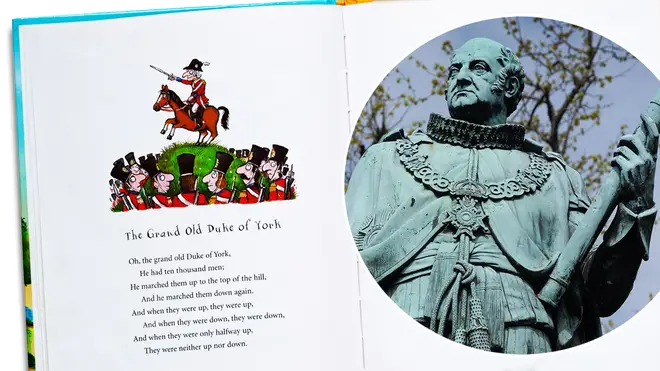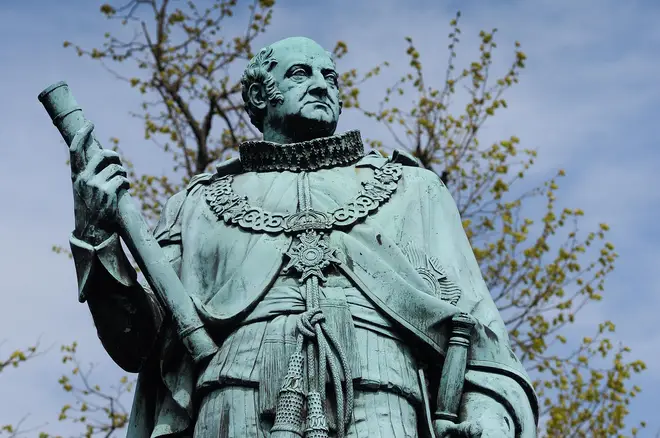On Air Now
Classic FM Breakfast with Dan Walker 6:30am - 9am
27 August 2021, 09:38

We explore the origins and intriguing history behind the popular children’s nursery rhyme.
The Grand Old Duke of York is an English nursery rhyme with accompanying actions.
It tells of a duke marching his few-thousand men up a hill and then down again. All straight forward enough…
But who is this duke? And why go up a hill with little else to be said for it than “it’s a hill”, only to come straight back down?
There’s actually a little more to the rhyme than meets the eye. Let’s gather the troops and march up to take a look.
Read more: What are the origins of ‘Humpty Dumpty Sat on a Wall’, and what do the lyrics mean?

The Grand Old Duke Of York | Nursery Rhymes | by LittleBabyBum!
‘The Grand Old Duke of York’ is one of the oldest known English nursery rhymes, thought to date back to the 1600s. It’s not certain who wrote the words or accompanying music heard today, but it was published in Arthur Rackham’s 1913 Mother Goose collection of nursery rhymes.
There is also a version surviving from 1642, which is called ‘Old Tarlton’s song’, with the lyrics: “The King of France with forty thousand men, Came up a hill and so came downe againe.”
This version is attributed to the Elizabethan era stage clown Richard Tarlton.
The duke in question has been argued to be Richard, Duke of York (1411–1460), whose forces were outnumbered and defeated at the Battle of Wakefield in northern England, on 30 December 1460.
This particular old duke wanted to prise the throne from the fingers of Lancastrian Henry VI, and the feud between the Yorks and Lancasters is what led to the Wars of the Roses.
There are also theories that the rhyme could be referring to Prince Frederick, Duke of York and Albany who commanded the British Army during the Napoleonic Wars – successfully to a point, but ultimately with the legacy of having been pretty ineffectual against Bonaparte’s campaign.
A third theory centres around King James II, who was formerly known as the Duke of York. In 1688 he marched troops to Salisbury Plain to resist the invasion of William of Orange, but he had to retreat when his men started to defect.
Read more: What are the lyrics and meaning of ‘Hey Diddle Diddle’, and who wrote the nursery rhyme?

The lyrics of ‘Grand Old Duke’ have come to stand for futile and useless military (or general) action. The men are marched up, then down, and the only thing to be said of it is that once they were up there, they were “up”, and once they were down again, they were “down”. Nothing else was achieved.
This reflects the story of all three dukes trying to overcome something but ending up right where they started, but particularly Richard, Duke of York in the Battle of Wakefield and Wars of the Roses.
The Duke of York had ten thousand men, in the most widely-used version of the nursery rhyme.
In the 1642 version of the song, the Grand Old Duke (referred to as “The King of France”) has forty thousand men, and there’s also a Dutch version of the song, which is about Prince Maurice of Orange instead, that lists a hundred thousand men.

Oh, the grand old Duke of York,
He had ten thousand men,
He marched them up to the top of the hill
And he marched them down again.
And when they were up they were up,
And when they were down they were down,
And when they were only half way up
They were neither up nor down.
It’s fun to interpret the song with whichever actions you like, but most people tend to stand up for the Grand Old Duke marching his men up the hill, sit down when they march them down again, and find a middle ground – for example, sitting on a chair rather than the floor – for when they “were only half way up” and so “neither up nor down”.